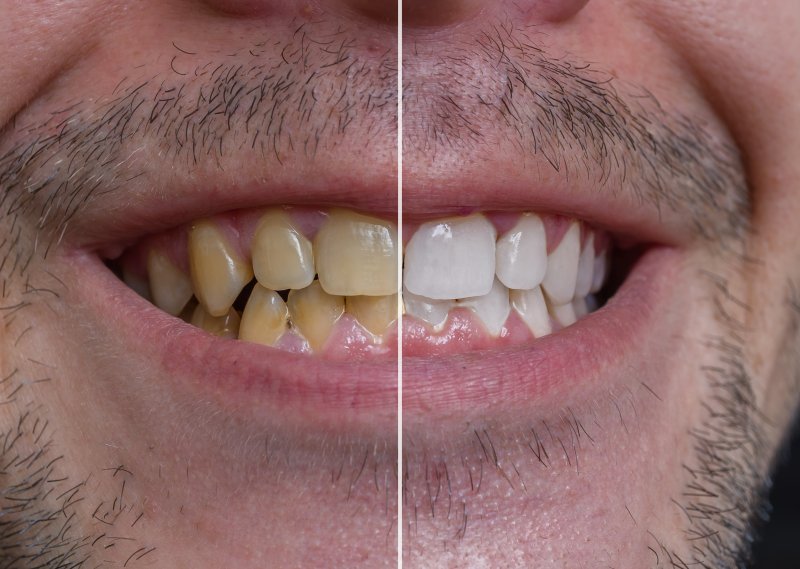
The color of your teeth isn’t necessarily a health concern, but many people still often wish that their smile was a little bit brighter. There are quite a few cosmetic treatments that can provide that, but if you want to prevent teeth stains before they set in, you have to know why they can come about in the first place.
As it turns out, there are several kinds of tooth stains, each of which with a different cause. If you want to know more about how your teeth can become discolored, here’s a guide to everything there is to know about tooth stains.
What Kinds of Tooth Stains Are There?
Tooth stains come in three different varieties, each of which has distinct causes. They are:
Extrinsic Stains
These stains sit on the very surface of the tooth, and they can be the result of food, drink, or tobacco residue. The pigments from them build up in the protein film that covers the enamel. Usually, good dental hygiene or brushing with whitening toothpaste is sufficient to address these kinds of stains.
Intrinsic Stains
These stains are slightly below the surface of the tooth, and are usually the result of extrinsic stains that have settled into the enamel itself. There are also some chemical processes that can cause teeth to yellow, like excessive fluoride use. Getting rid of intrinsic stains typically requires a professional whitening treatment.
Stains from Aging
The enamel is just the top layer of the tooth. The layer underneath is called dentin, and it’s naturally a brownish color. As we age, that dentin gets darker and our enamel becomes thinner, exposing more of the interior of the tooth. The result is that your teeth will become discolored as you age, even if you take fairly good care of them.
Dentin can’t be whitened effectively with bleaching treatments, so these stains will probably have to be covered up by dental bonding or veneers.
There are many types of stains, but they share one thing: your lifestyle choices can exacerbate them greatly. By cutting back on cigarettes, coffee, and red wine, you’ll be able to keep your teeth white for a long time to come.
About the Author
Dr. Louis Olberding is a dentist who believes that the best results come from careful planning. That’s why he uses the latest techniques to diagnose his patients, and works hard to create a customized treatment plan for them. Dr. Olberding completed his DDS at the University of Nebraska Medical Center College of Dentistry, and has received extensive training from the prestigious Spear Study Club.
If you have any questions about teeth stains, he can be reached at his website or by phone at (402) 488-2325.
